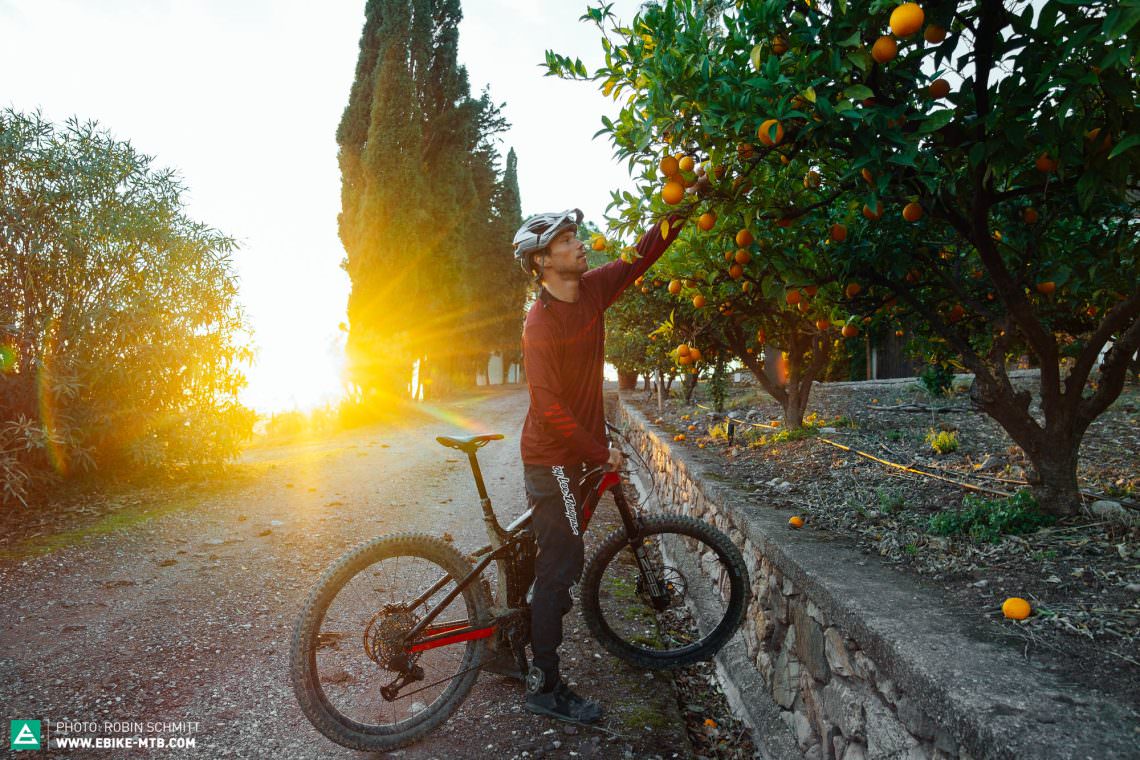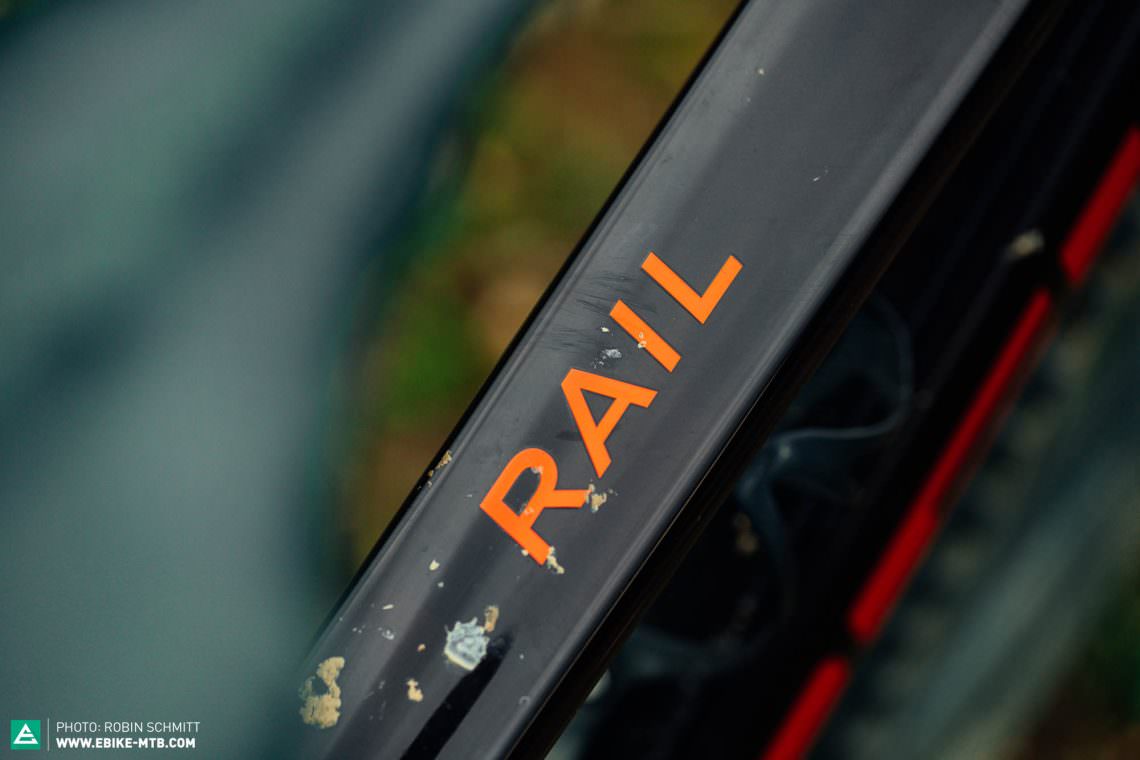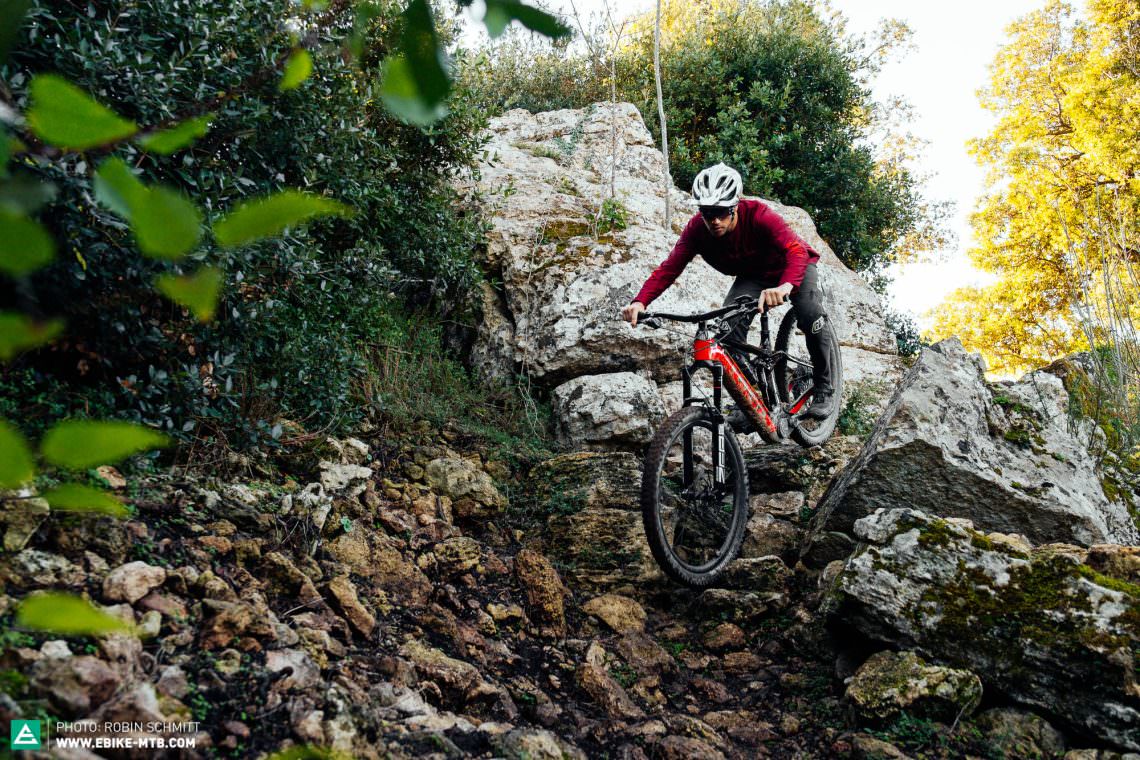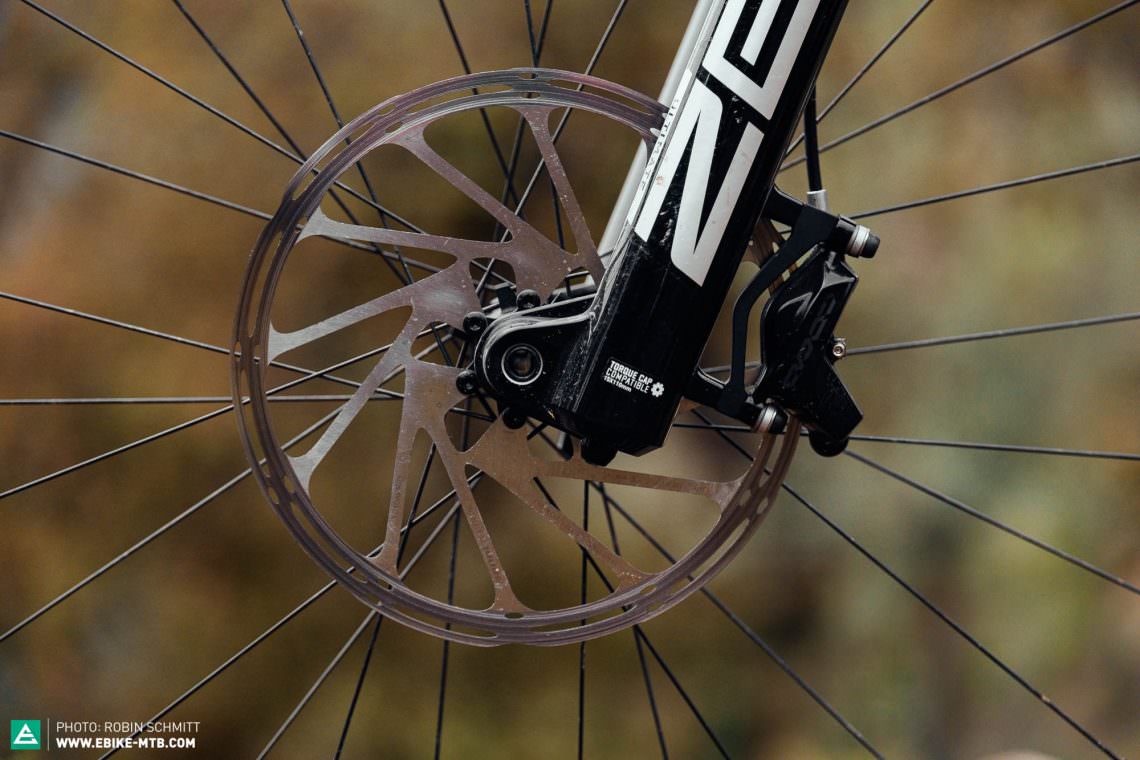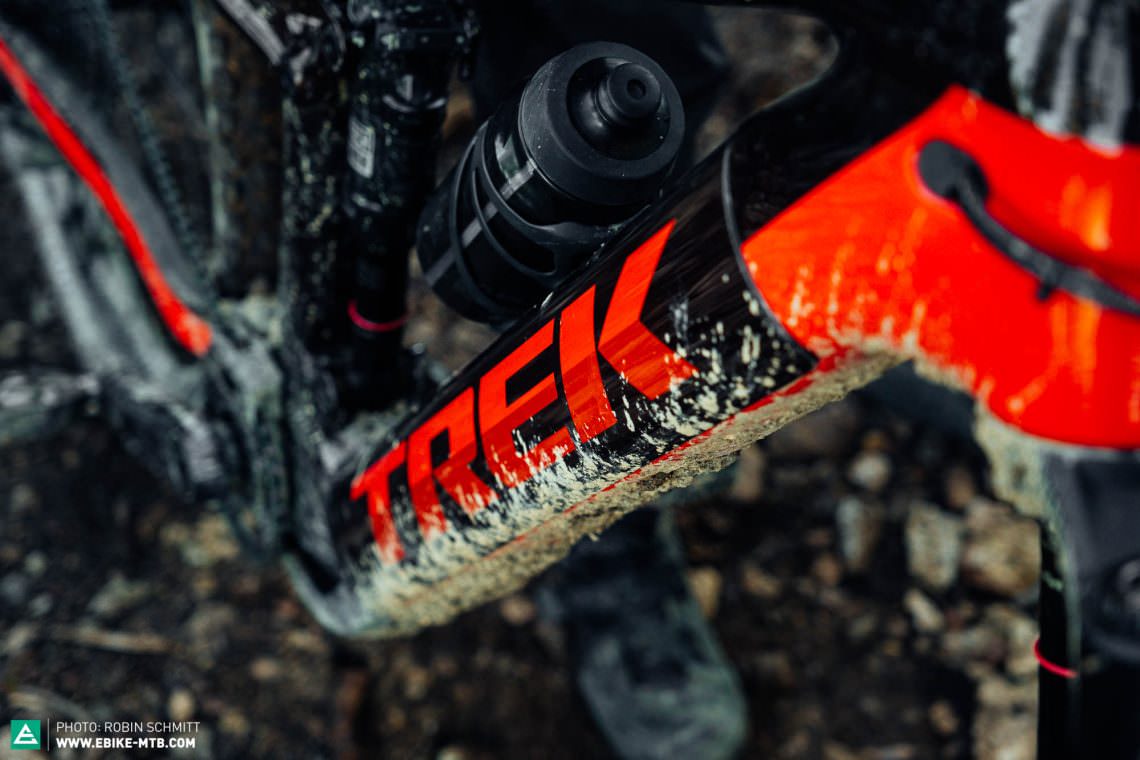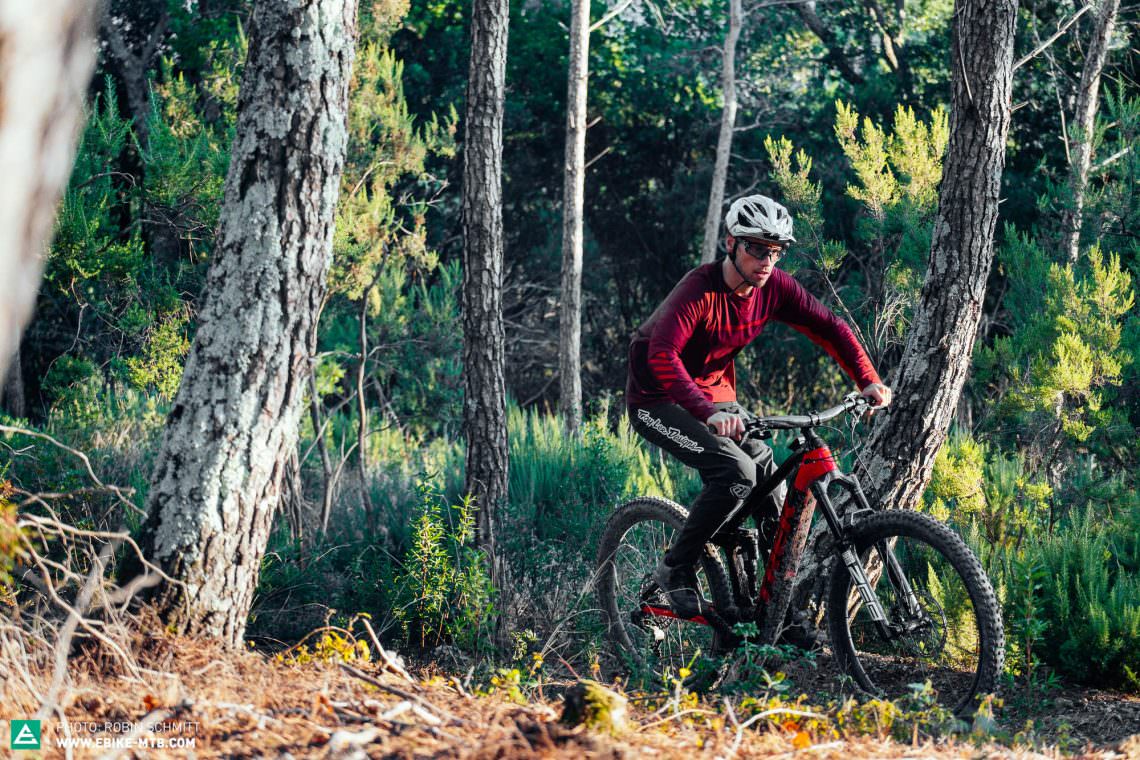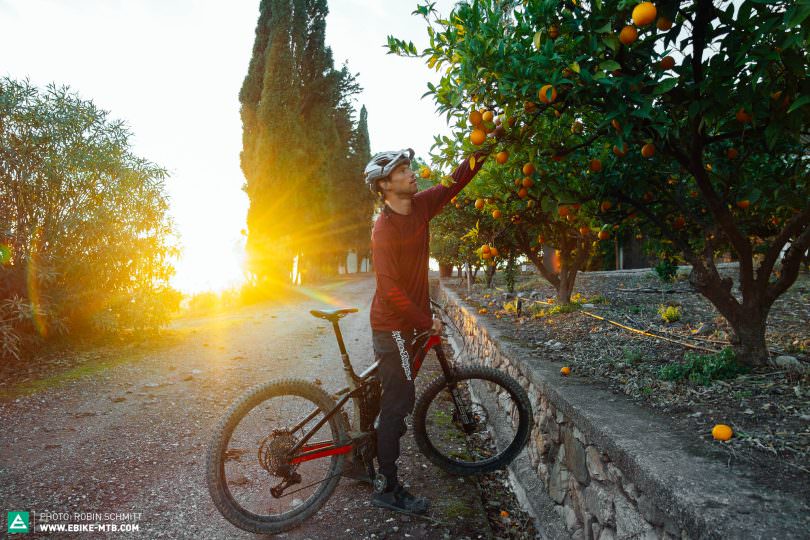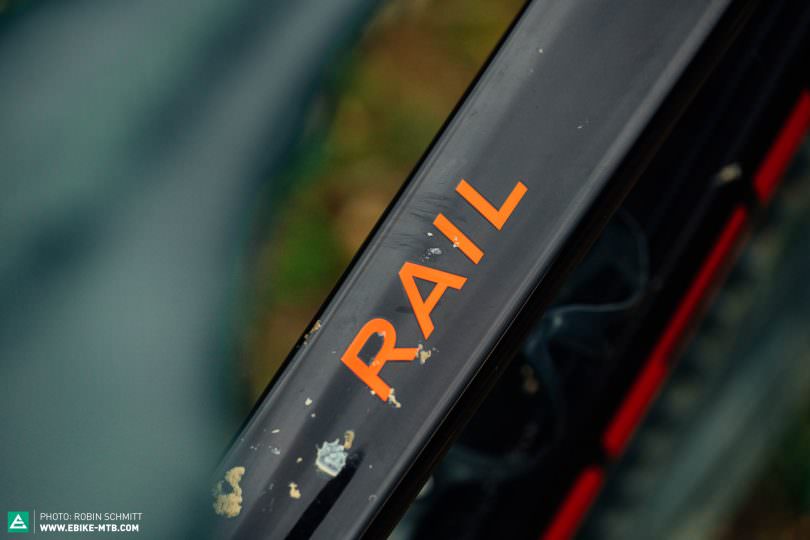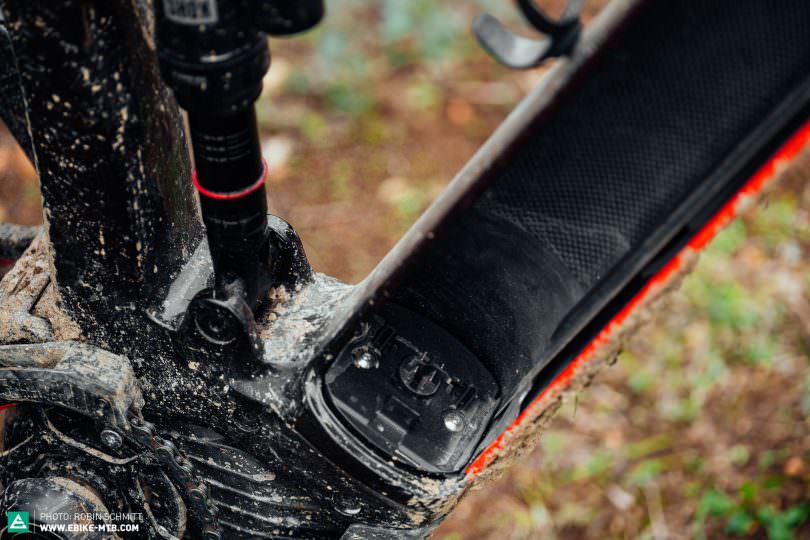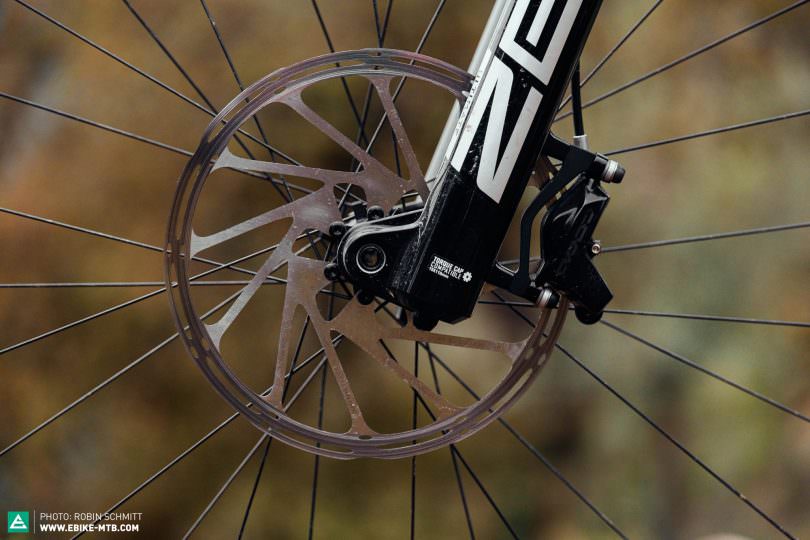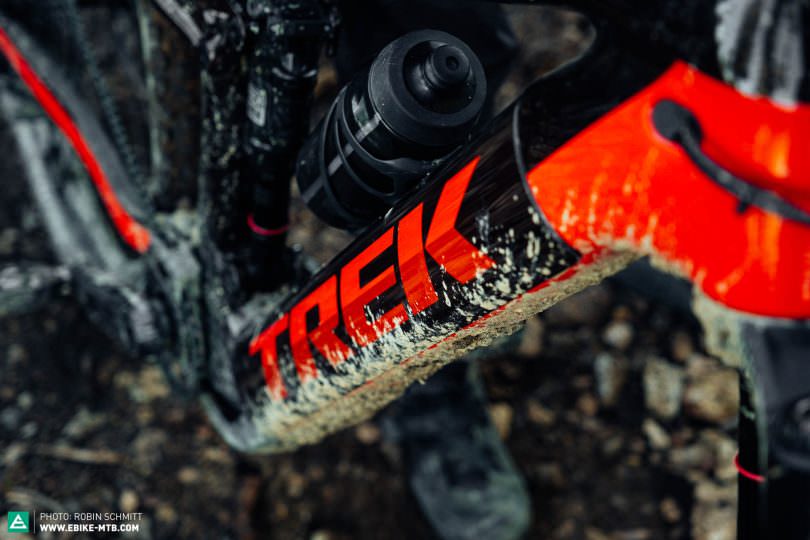With all the smarts it’s got, the new Trek Rail 9.9 XX1 AXS should get a PhD. In addition to the new Bosch Smart System, the 2022 model is the first to come equipped with RockShox suspension featuring AirWiz sensors. But does Dr Rail really benefit from all that smartness on the trail?
The Trek Rail has been the most capable eMTB in the American brand’s portfolio since 2019. It promises to excel even on the most demanding descents and recently it convinced us of that in our big 2021 eMTB group test. There, its predecessor Trek Rail 9.9 X01, proved its capability on rough downhills. Some of the core ingredients of this recipe for success have remained untouched. As such, the 2022 Trek Rail rolls on 29″ wheels and offers 160 mm travel up front and 150 mm in the back. What’s more, Trek have made numerous updates to prepare the new Rail for the coming season. They’re asking € 13,599 for the flagship model, ticking the boxes with every new feature you can think of. Fully equipped our size L test bike weighs 23.52 kg.

23.52 kg in size L | € 13,599 | Manufacturer’s website
The new Trek Rail 9.9 XX1 AXS in detail
For the new Rail, Trek are relying on the Bosch Performance Line CX Smart System, though the motor itself remains largely unaffected by the update. It’s neatly integrated into the carbon frame and the skid plate allows it to blend seamlessly with the Rail’s silhouette. A new addition to Bosch’s Smart System is the bigger 750 Wh battery. As usual with Trek, the battery can be removed from the side of the down tube and comes with a convenient carrying handle. The down tube and the battery opening in the frame had to be adapted to accommodate a larger battery, which proved to be a technical challenge for Trek engineers, but more on that later.
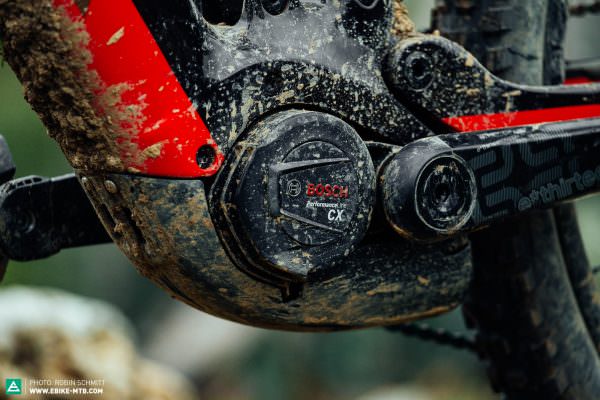
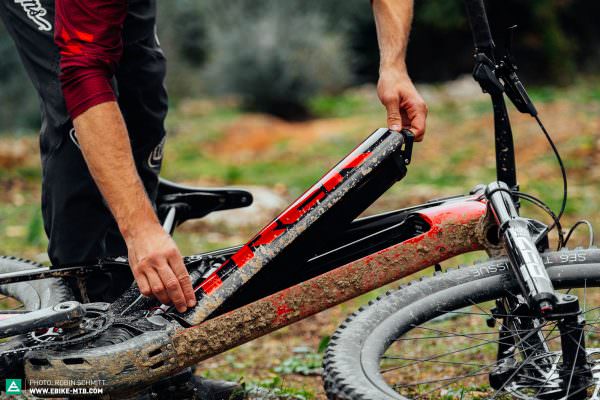
Along with the new battery, the display and remote are spanking new, too. The Kiox 300 display sits well protected on the top tube, but this makes it a little harder to read while riding. The cables connecting the display are all hidden inside the frame. The new Bosch LED remote is where the action happens. It controls all eMTB specific functions on the Rail and can display the battery level and support mode via its integrated LEDs. There’s a catch, though, operating the many small buttons on the remote takes some getting used to. All the cables running from the cockpit are routed into the frame via ports just behind the head tube. Speaking of which, the head tube on the Trek Rail is quite burly, though it blends in nicely with the bike’s silhouette thanks to the 1.8″ steerer tube and the oversized crown of the RockShox ZEB fork, making it sit flush with the head tube. Trek have fitted their Knock Block 2.0 in the headset so that neither the display nor the frame gets damaged by the handlebar or fork crown in the event of a crash, allowing you to turn the handlebar by a maximum of 72° in each direction.
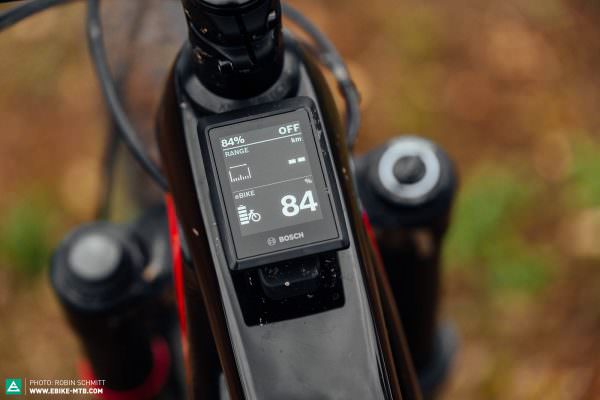
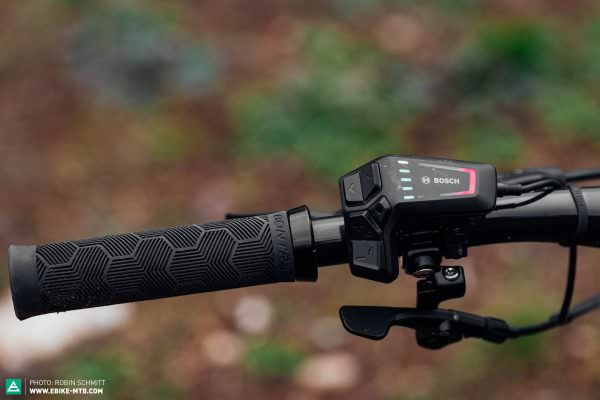

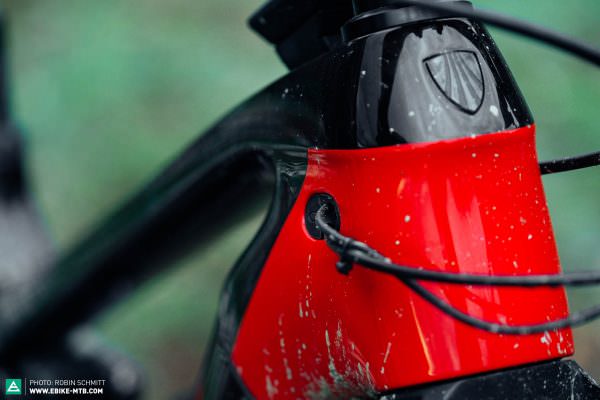
There’s a convenient spring-loaded flap to keep the charging port in the seat tube clean and dry, and the flap is colour-matched to the frame. While we’re on the topic, we could spend hours admiring the deep red colour scheme, which Trek call Carbon Red Smoke/Viper Red. If you don’t like the combo, you can pay a little more and go wild in the Project One configurator, offering a myriad of colour combinations and elaborate effects for the Trek Rail.
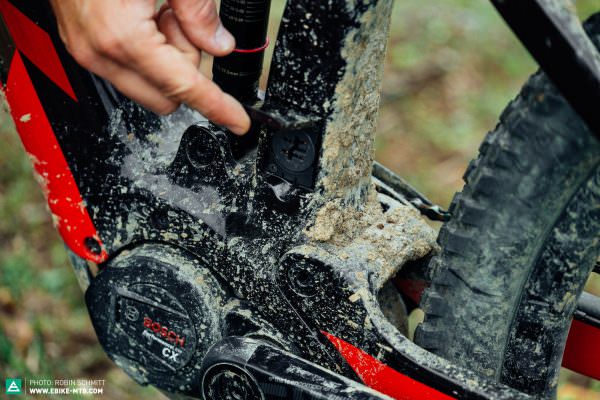
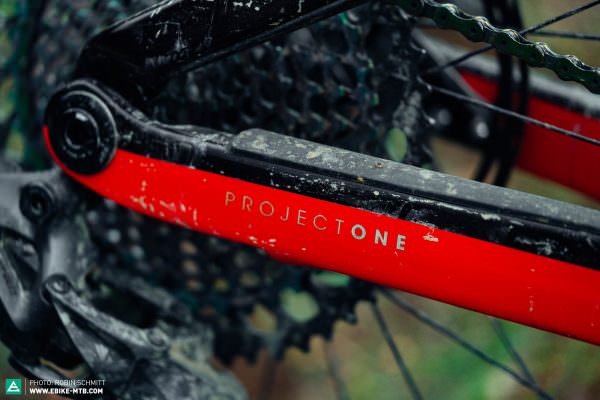
AirWiz and TyreWiz – The smart sensors on the 2022 Trek Rail 9.9 XX1 AXS
The Trek Rail is the first eMTB featuring the new AirWiz system, which is a digital pressure gauge for the suspension and only comes specced on the flagship Rail 9.9 model. It monitors the fork and shock performance, displaying the exact air pressure on your smartphone via a Bluetooth connection. The two little helpers are listed as new sensors in the SRAM AXS app. To make the suspension setup as simple as possible for newbies, you can enter your weight in the app and it will give you a target pressure for each component. If the current pressure is outside the target range (+/- 2 psi in the fork and +/- 5 psi in the shock), you’ll see a red light flashing on the affected component to let you know. If the recommended air pressure seems too low or too high, the app also allows you to set the target range manually, which we had to do regularly during the test. Unfortunately, the weight-based air pressure recommendations for the shock are clearly too low and didn’t match the recommendations of Trek’s online suspension calculator for the Rail 9.9. Unlike the new RockShox Flight Attendant for analogue bikes or the FOX E-Live Valve, the smart suspension on the Trek Rail isn’t intended to adjust any of the settings by itself.
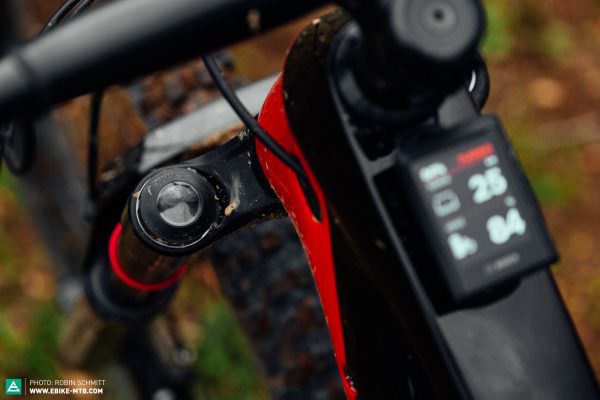


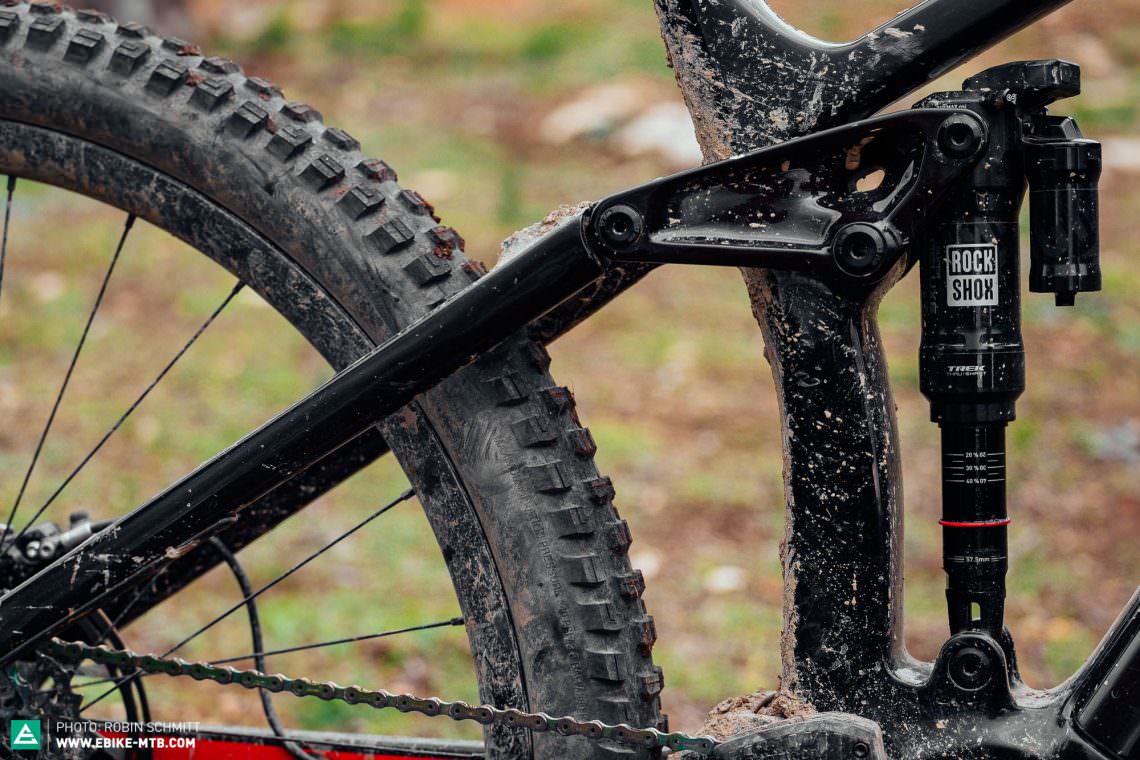
Another special feature of the RockShox Super Deluxe shock is the ThruShaft technology developed by Trek and the kinematics of the rear linkage are based on that. Compared to conventional shock design, the ThruShaft technology allows the piston rod to exit to the bottom of the shock as it compresses, so the rod doesn’t displace any oil inside the shock oil chamber and therefore does not have to be compensated for by additional piston movement. Ultimately, this promises to result in a more sensitive response.
In addition to the AirWiz sensors on the suspension, you’ve got TyreWiz sensors on the rims, which are also connected to the SRAM AXS app, sounding an alarm if the pressure drops and allowing you to check your tire pressure in real time. They’re critical here since the puncture-prone Bontrager SE5/SE6 tires must be run at high pressures to avoid damaging the Bontrager Line Pro carbon wheels. With the XX1 Eagle AXS 12-speed groupset and the RockShox Reverb AXS dropper post, Trek fill the remaining gaps on the spec list with high-end wireless components from the AXS ecosystem. However, there was no AXS dropper post available at the time of testing, which is why our test bike came equipped with a Bontrager model.
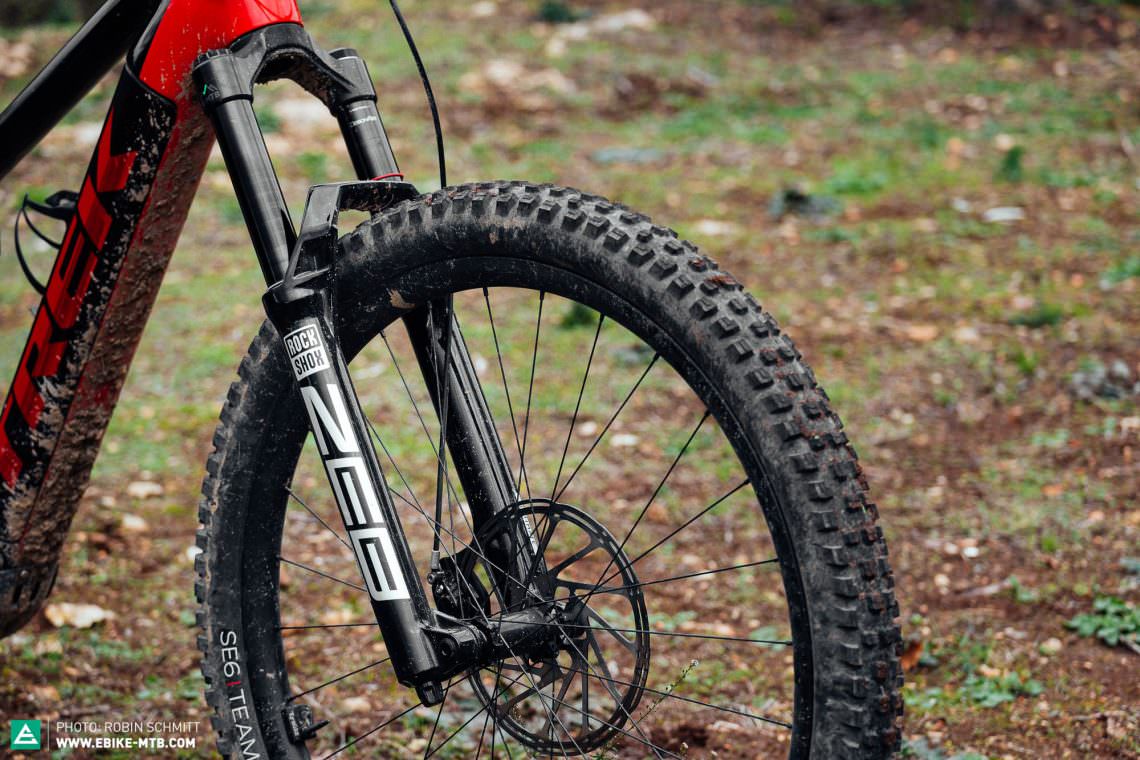
Tuning titp: thick and robust tires such as MAXXIS Doubledown or Schwalbe Super Gravity models with a soft rubber compound
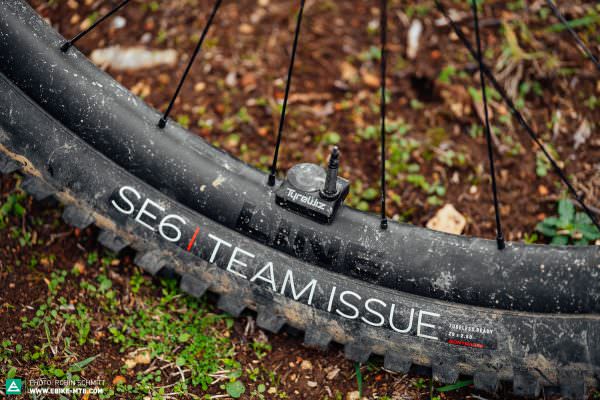
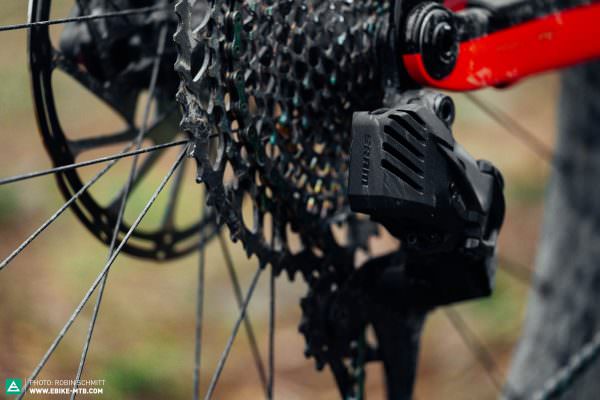

TREK Rail 9.9 XX1 AXS
€ 13,599
Specifications
Motor Bosch Performance Line CX 85 Nm
Battery Bosch PowerTube 750 Wh
Display Bosch Kiox 300
Fork RockShox ZEB Ultimate 160 mm
Rear Shock RockShox Super Deluxe Ultimate ThruShaft 150 mm
Seatpost RockShox Reverb AXS 100-200 mm
Brakes SRAM CODE RSC 220/200 mm
Drivetrain SRAM XX1 Eagle AXS 1x12
Stem Bontrager Line Pro 45 mm
Handlebar Bontrager Line Pro OCLV Carbon 780 mm
Wheelset Bontrager Line Pro 29"
Tires Bontrager SE5/SE6 Core Strength 2.5"
Technical Data
Size M L XL
Weight 23.52 kg
Perm. total weight 136 kg
Max. payload (rider/equipment) 112 kg
Trailer approval yes
Kickstand mount yes
Specific Features
TyreWiz
AirWiz
Other models in the 2022 Trek Rail range
There are many different Trek Rail models available, but it’s only starting from the Trek Rail 9.8 that you get the new carbon frame, Bosch Performance Line CX Smart System motor and 750 Wh battery. All the models up to the 9.7 are identical to the previous model that we tested last year (see the review here).
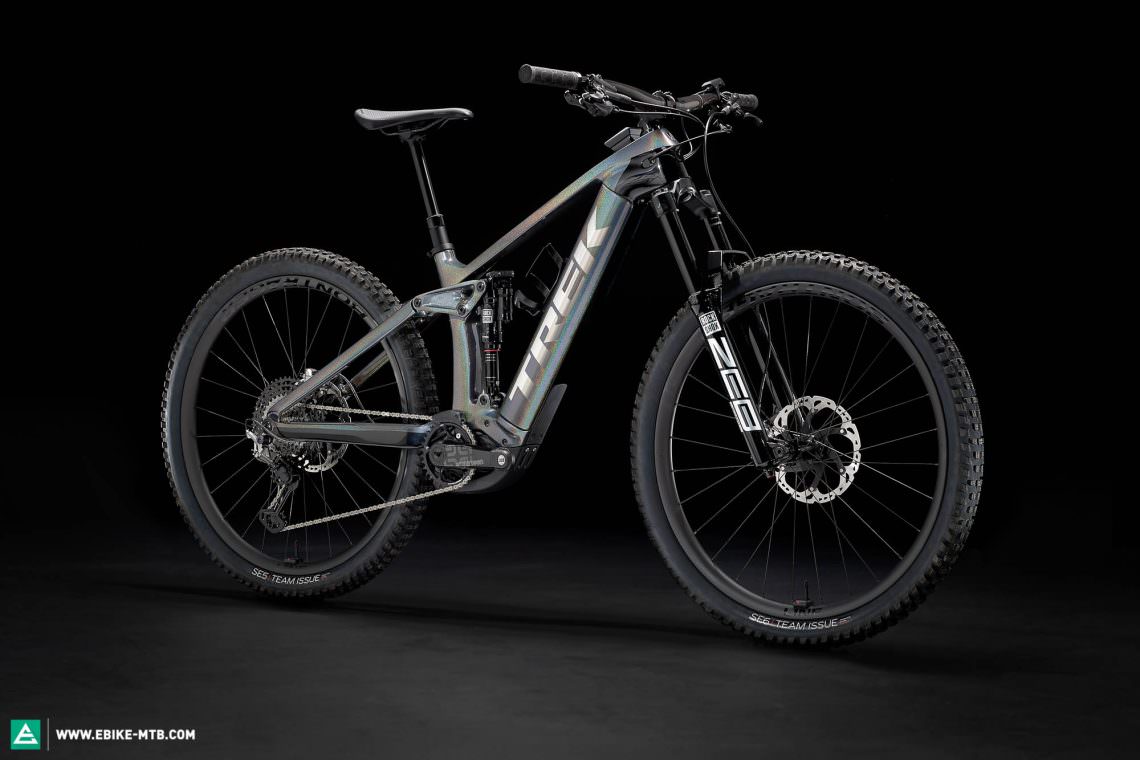
TREK 9.9 XTR
€ 11,599
Specifications
Motor Bosch Performance Line CX 85 Nm
Battery Bosch PowerTube 750 Wh
Display Bosch Kiox 300
Fork RockShox ZEB Ultimate 160 mm
Rear Shock RockShox Super Deluxe Ultimate ThruShaft 150 mm
Seatpost Bontrager Line Elite 100-200 mm
Brakes Shimano XTR M9120 200/200 mm
Drivetrain Shimano XTR 1x12
Stem Bontrager Line Pro 45 mm
Handlebar Bontrager Line Pro OCLV Carbon 780 mm
Wheelset Bontrager Line Pro 29"
Tires Bontrager SE5/SE6 Core Strength 2.5"
Technical Data
Size M L XL
Weight 22,77 kg (Herstellerangabe in Größe M)
Perm. total weight 136 kg
Max. payload (rider/equipment) 113 kg
Trailer approval yes
Kickstand mount yes
Specific Features
TyreWiz
AirWiz
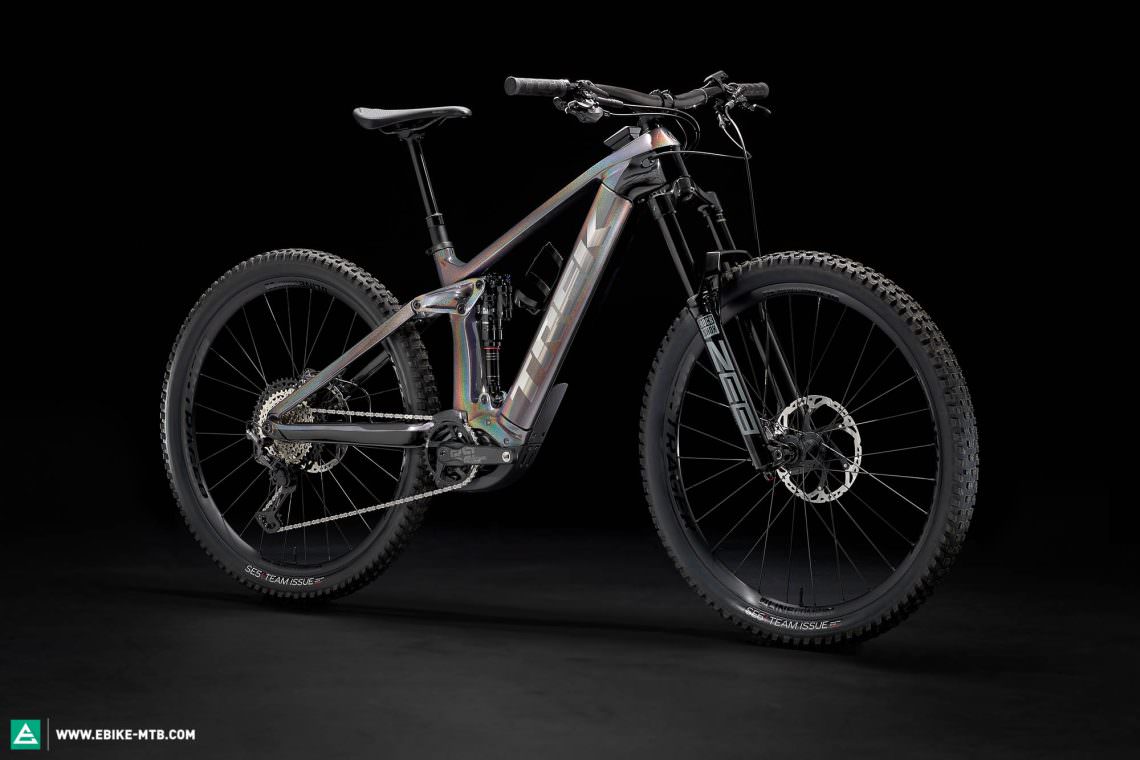
TREK 9.8 XT
€ 9,099
Specifications
Motor Bosch Performance Line CX 85 Nm
Battery Bosch PowerTube 750 Wh
Display Bosch Kiox 300
Fork RockShox ZEB Select+ 160 mm
Rear Shock RockShox Super Deluxe Ultimate ThruShaft 150 mm
Seatpost Bontrager Line Elite 100-200 mm
Brakes Shimano XT M8120 200/200 mm
Drivetrain Shimano XT 1x12
Stem Bontrager Line Pro 45 mm
Handlebar Bontrager Line Pro OCLV Carbon 780 mm
Wheelset Bontrager Line Comp 29"
Tires Bontrager SE5/SE6 Core Strength 2.5"
Technical Data
Size M L XL
Weight 23,4 kg (Herstellerangabe in Größe M)
Perm. total weight 136 kg
Max. payload (rider/equipment) 112 kg
Trailer approval yes
Kickstand mount yes
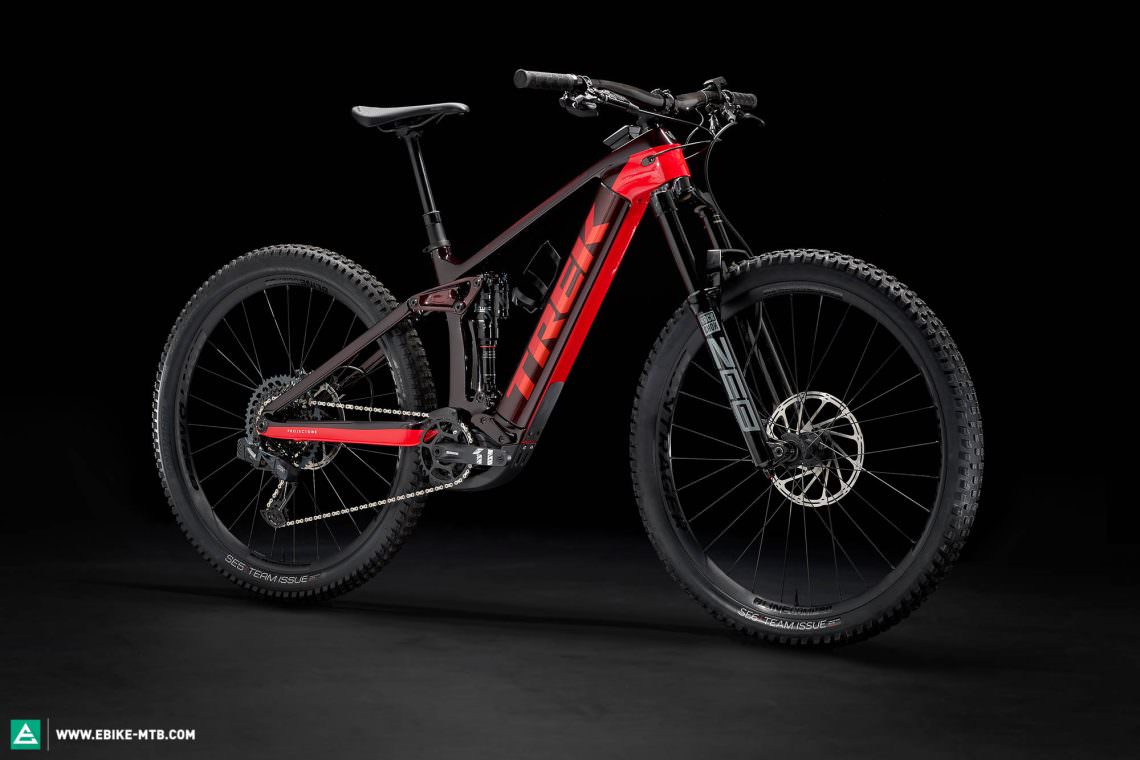
TREK 9.8 GX AXS
€ 9,699
Specifications
Motor Bosch Performance Line CX 85 Nm
Battery Bosch PowerTube 750 Wh
Display Bosch Kiox 300
Fork RockShox ZEB Select+ 160 mm
Rear Shock RockShox Super Deluxe Ultimate ThruShaft 150 mm
Seatpost Bontrager Line Elite 100-200 mm
Brakes SRAM CODE R 200/180 mm
Drivetrain SRAM GX Eagle AXS 1x12
Stem Bontrager Line Pro 45 mm
Handlebar Bontrager Line Pro OCLV Carbon 780 mm
Wheelset Bontrager Line Comp 29"
Tires Bontrager SE5/SE6 Core Strength 2.5"
Technical Data
Size M L XL
Weight 23,4 kg (Herstellerangabe in Größe M)
Perm. total weight 136 kg
Max. payload (rider/equipment) 112 kg
Trailer approval yes
Kickstand mount yes
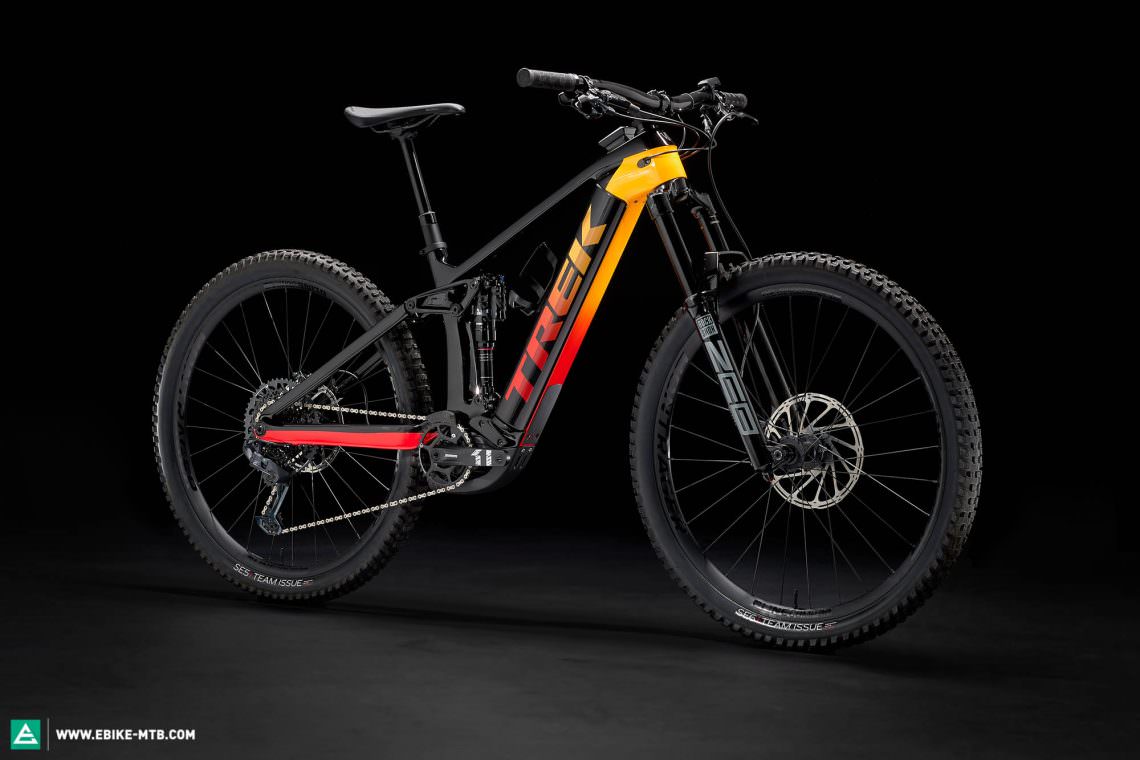
TREK 9.8 GX
€ 9,699
Specifications
Motor Bosch Performance Line CX 85 Nm
Battery Bosch PowerTube 750 Wh
Display Bosch Kiox 300
Fork RockShox ZEB Select+ 160 mm
Rear Shock RockShox Super Deluxe Ultimate ThruShaft 150 mm
Seatpost Bontrager Line Elite 100-200 mm
Brakes SRAM CODE R 200/180 mm
Drivetrain SRAM GX Eagle 1x12
Stem Bontrager Line Pro 45 mm
Handlebar Bontrager Line Pro OCLV Carbon 780 mm
Wheelset Bontrager Line Comp 29"
Tires Bontrager SE5/SE6 Core Strength 2.5"
Technical Data
Size M L XL
Weight 23,45 kg (Herstellerangabe in Größe M)
Perm. total weight 136 kg
Max. payload (rider/equipment) 112 kg
Trailer approval yes
Kickstand mount yes
The geometry of the 2022 Trek Rail 9.9 XX1 AXS
The new Trek Rail will initially be limited to sizes M–XL. Due to the long battery, it has a very long front centre. However, the riding position remains upright and balanced enough for long tours thanks to the tower of spacers under the stem. The head and seat tube angles can be adjusted by almost half a degree via a flip chip in the rear shock mount. However, the steep setting doesn’t provide much benefit in most riding situations, which is why we recommend keeping it in the slack setting.
| Size | M low/high | L low/high | XL low/high |
|---|---|---|---|
| Seat tube | 420 mm | 450 mm | 500 mm |
| Top tube | 601 mm | 639 mm | 673 mm |
| Head tube | 110 mm | 125 mm | 140 mm |
| Head angle | 64.2°/ 64.6° | 64.2°/ 64.6° | 64.2°/ 64.6° |
| Seat angle | 70.8°/ 71.2° | 70.8°/ 71.2° | 70.8°/ 71.2° |
| Chainstays | 448 mm | 448 mm | 448 mm |
| BB height | 341 mm/ 346 mm | 341 mm/ 346 mm | 341 mm/ 346 mm |
| Wheelbase | 1,236 mm | 1,278 mm | 1,314 mm |
| Reach | 452 mm | 487 mm | 517 mm |
| Stack | 625 mm | 634 mm | 643 mm |
Riding the 2022 Trek Rail 9.9 XX1 AXS on flat terrain and uphill
The Trek Rail offers a balanced riding position on flat terrain, though the stiff suspension provides limited comfort on long rides. If you aim the Trek Rail at the summit of a high mountain, you can rely on the assistance of the Bosch Smart System motor to get you there. The motor unleashes its power even when you’re pedalling at a slow cadence, effortlessly propelling the Rail up even the steepest inclines. The stiff suspension remains high in its travel and thereby keeps the front wheel planted. On technical sections, the motor helps negotiate steps and ledges as it continues to provide power for some time after you stop pedalling. All you have to do is weigh the rear wheel down so it doesn’t spin, in which case the Trek Rail will get up every climb reliably. On the other hand, you must use the brakes to stop the motor from pushing you off the line when navigating tight corners. Experienced riders who are well acquainted with the characteristics of the lively Bosch motor can have a lot of fun on flow trails doing power wheelies out of corners. In wet conditions, the Trek’s handling deteriorates significantly on both technical and flowing uphills due to the lack of grip offered by the Bontrager SE5 and SE6 Team Issue tires.

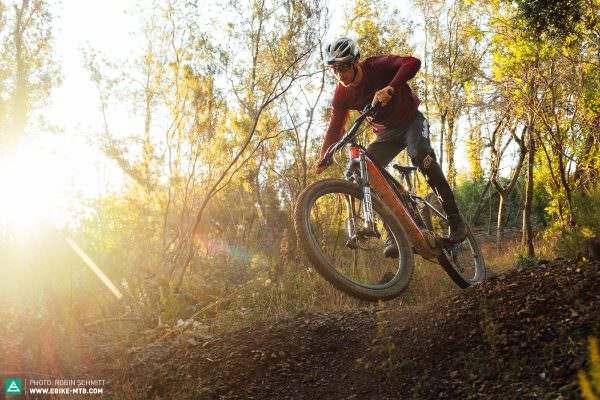
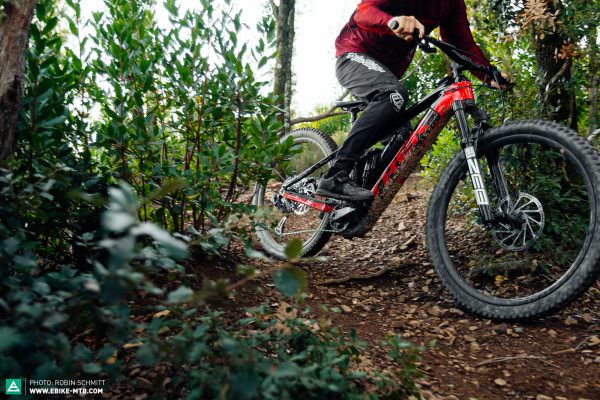
The Trek Rail wants to surge ahead, but it’s slowed down by its components
The 2022 Trek Rail 9.9 XX1 AXS on the descents
On flowing descents, the Trek Rail benefits from a balanced weight distribution and offers plenty of freedom of movement, living up to its name when riding through berms. Moreover, the firm suspension allows you to generate speed by actively pumping the bike through rollers. Despite the active suspension, the Trek Rail isn’t able to generate that much traction due to the pressure at which you have to run the tires. On technical descents, the lack of grip and the stiff chassis make for difficult handling. Advanced riders can compensate for the lack of grip to some degree by actively weighting the wheels and using technical manoeuvres to skip over roots and obstacles. At slow speeds, beginners with a more passive riding style will find the Trek Rail too long and cumbersome to navigate obstacles with any precision. They’ll have to resort to less technical lines. If you point the Rail down fast and rough descents, the long front centre, tall cockpit and ample reserves of suspension provide everything you need to set your personal records. Unfortunately, the battery inside the down tube develops a life of its own through hard hits and compressions. Because of the loose fit, it causes the Trek Rail to vibrate and feel nervous at high speeds. After consulting Trek, we were assured that they would address this problem on the production bikes with the help of special foam inserts in the down tube. We’ll tell you whether this improves the fit of the battery in our big eMTB group test next spring, where we’ll be reviewing the Trek Rail once more.
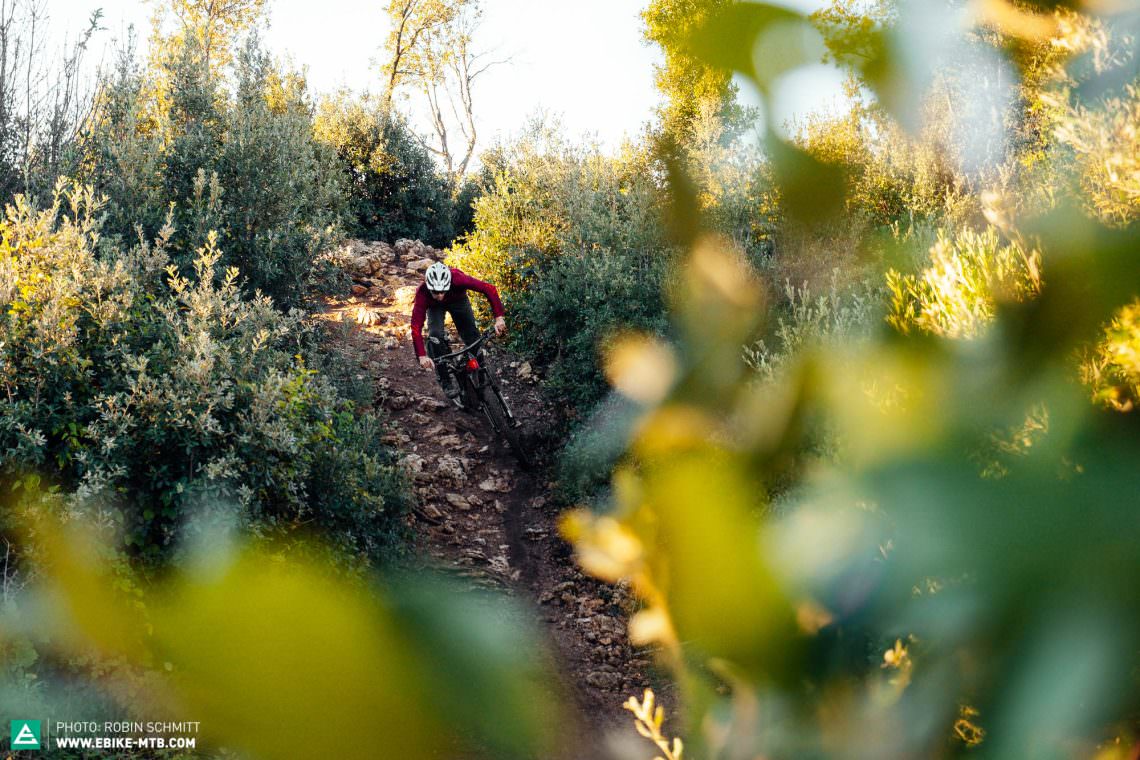
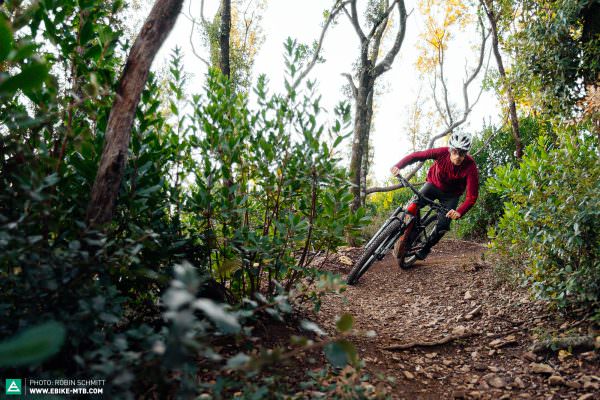
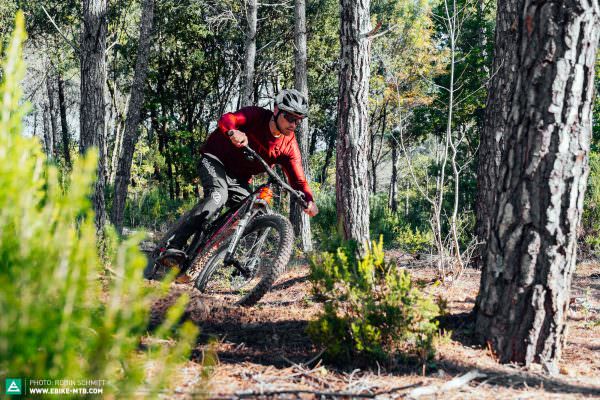
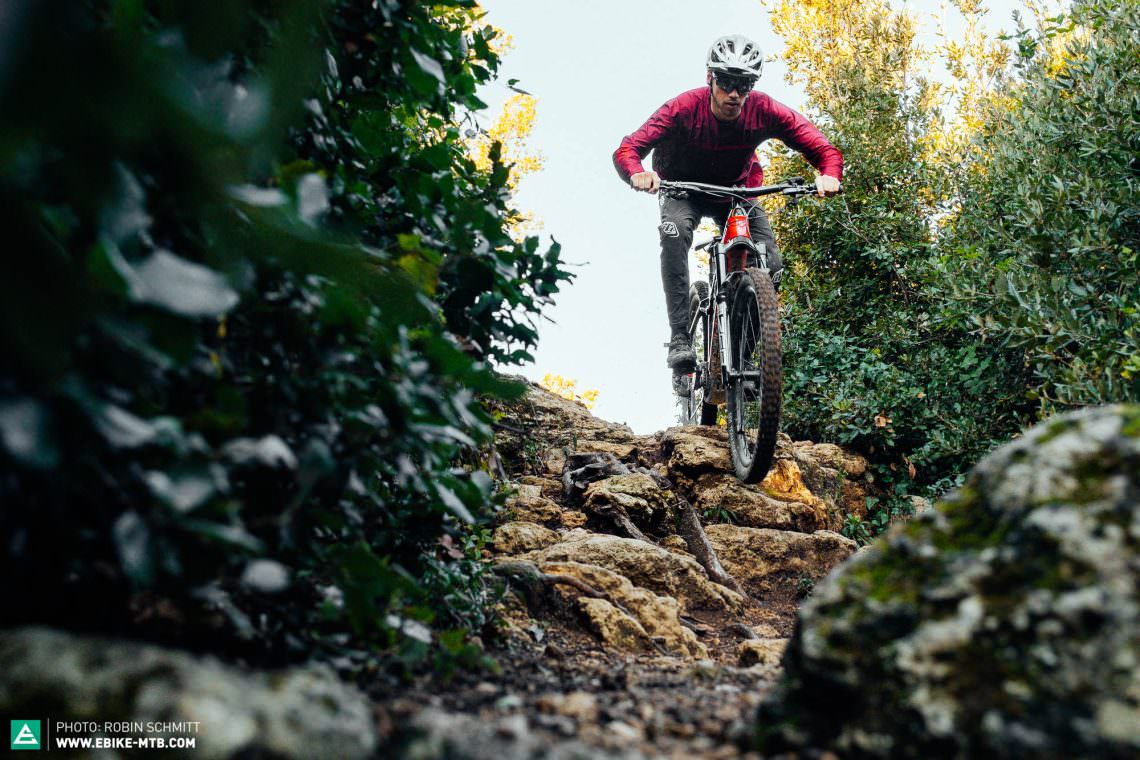
Our conclusion on the 2022 Trek Rail 9.9 XX1 AXS
The 2022 Trek Rail 9.9 XX1 AXS is aimed at aggressive and experienced riders with an active riding style who want to explore the potential of the capable suspension. However, the loose battery on our pre-production test bike makes for nervous handling at high speeds. The tires which lack grip and carbon rims don’t suit the concept of this bike. Stay tuned to find out how the Trek Rail fares on its second attempt with an improved battery fit in our eMTB group test next spring.
Tops
- suspension offers lots of reserves
- unique paintwork
Flops
- poorly fitting battery
- components don't do the bike justice
- AirWiz recommendations are off
Für more information visit trekbikes.com
Did you enjoy this article? If so, we would be stoked if you decide to support us with a monthly contribution. By becoming a supporter of E-MOUNTAINBIKE, you will help secure a sustainable future for high-quality cycling journalism. Click here to learn more.
Words: Rudolf Fischer Photos: Robin Schmitt




